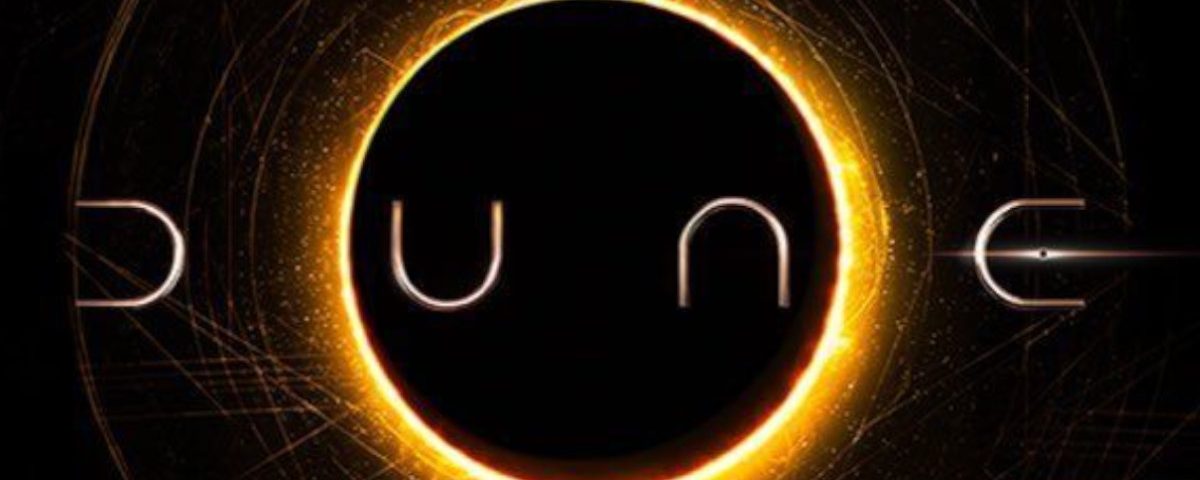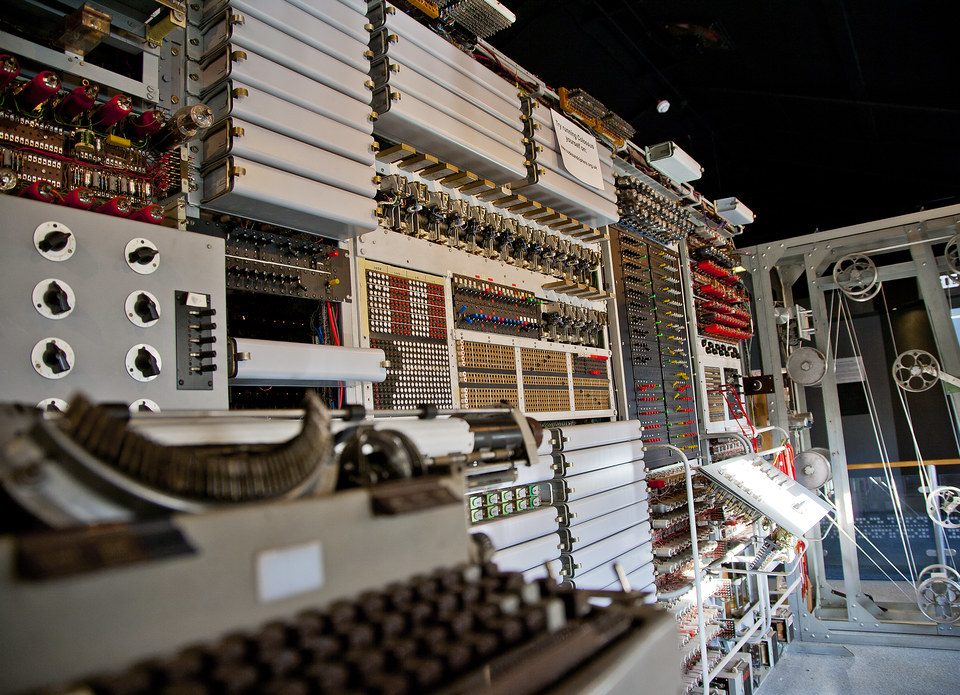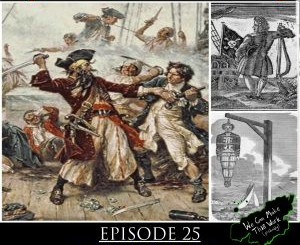
E25 – WORST. PIRATES. EVER.
October 30, 2021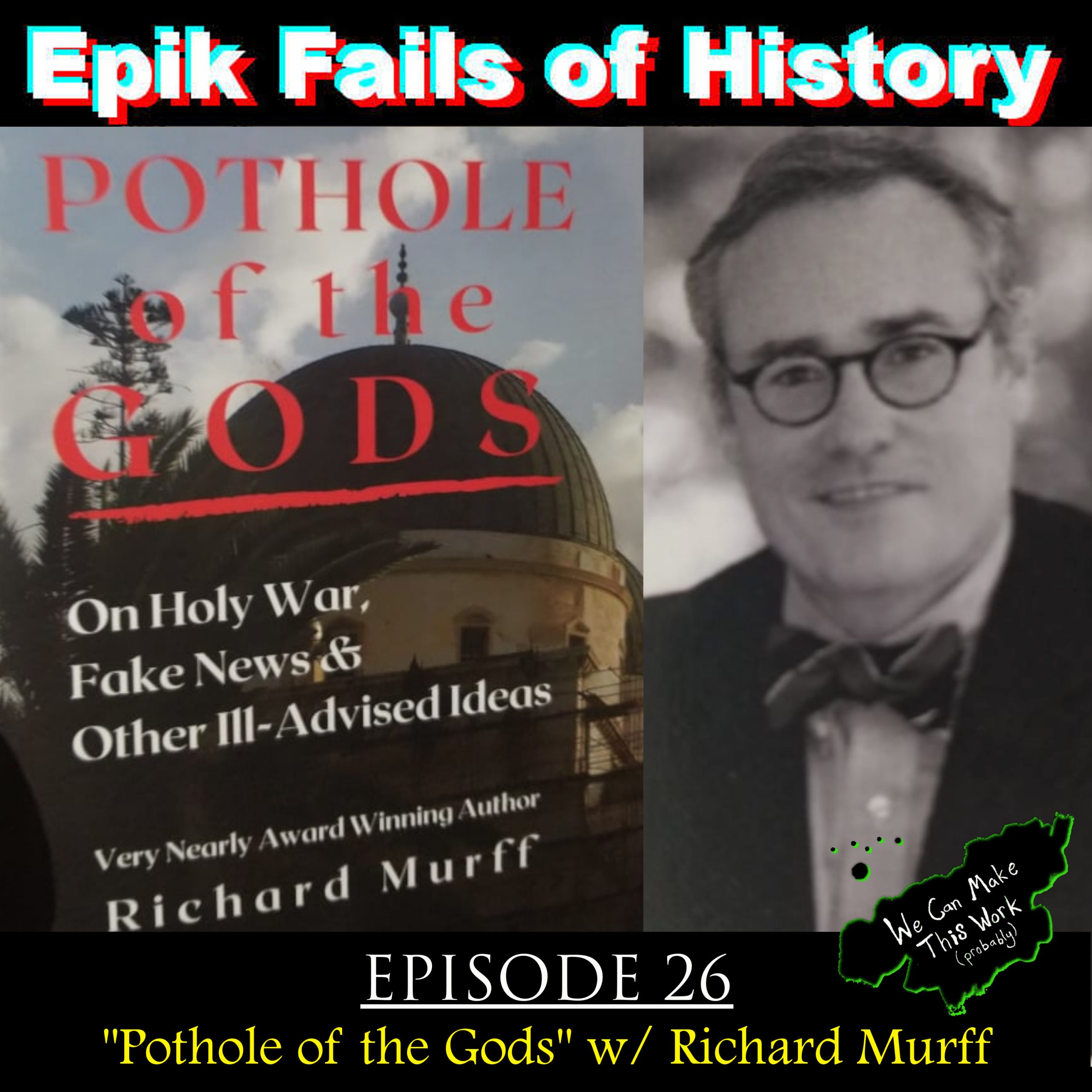
E26 – “Pothole of the Gods” w/ Richard Murff (Podcast)
December 14, 2021Reblogged from Geek to Geek Media!
2021’s “DUNE“ (directed by Denis Villeneuve) is in no uncertain terms a cinematic masterpiece. It succeeds where the 1984 David Lynch film falters, and it manages to capture the essence of Frank Herbert’s Nebula award-winning sci-fi epic, a book that until now was considered ‘unadaptable’. This movie pushes the genre forward for film in much the same way the original novel did nearly 60 years ago!
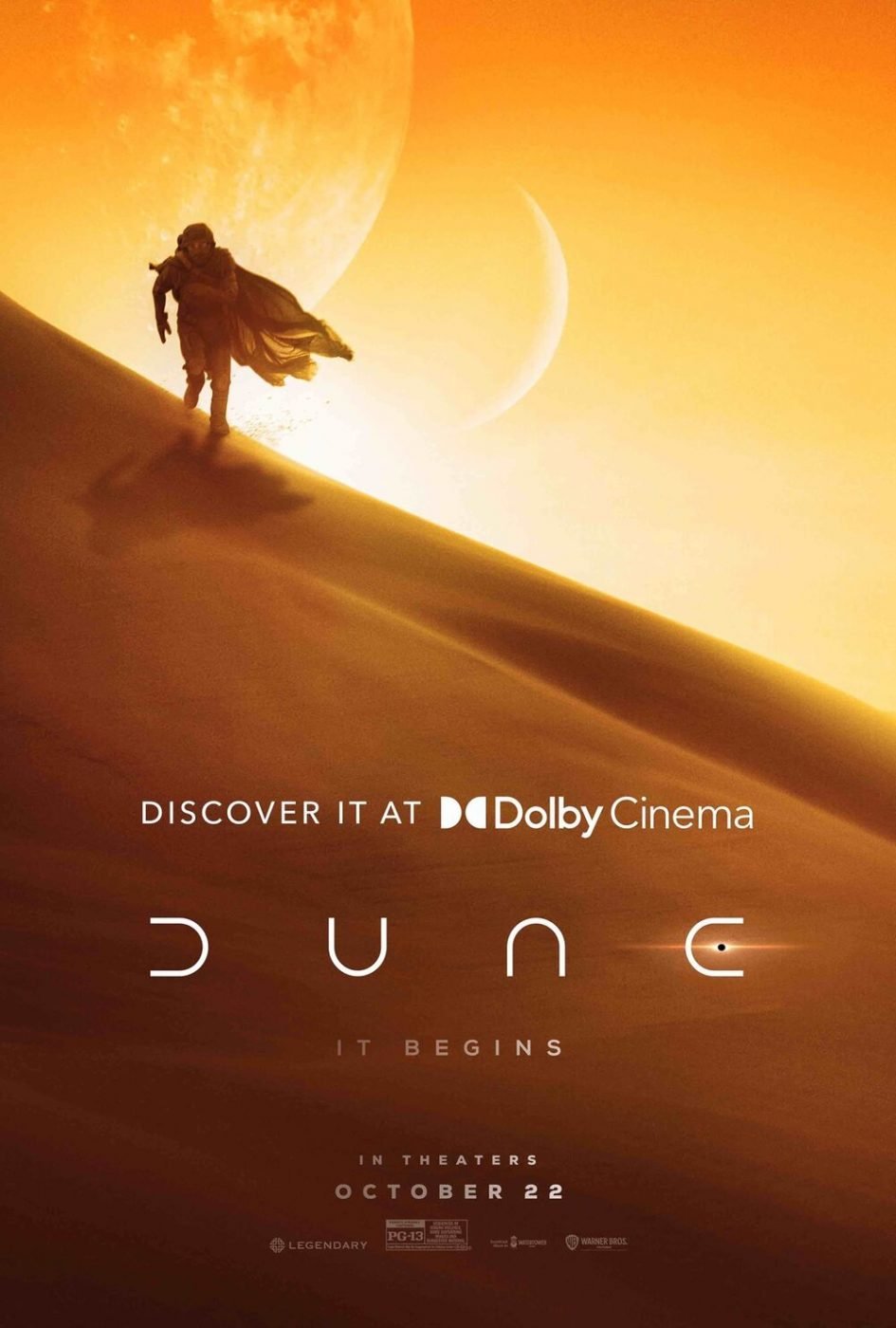
FRANK HERBERT’S EPIC SAGA
In 1965, Frank Herbert (a journalist and ecological consultant) wrote a science fiction masterwork. It not only transcended speculative fiction, but it also went on to inspire countless other books and movies to the point where its influence is still heavily felt even today. In fact, it’s hard to come away from “Dune” without realizing just how much George Lucas shamelessly ripped off its concepts in the very foundation for his own galaxy-spanning space opera (Star Wars, for those that have been living under a rock on a faraway desert planet since 1977).
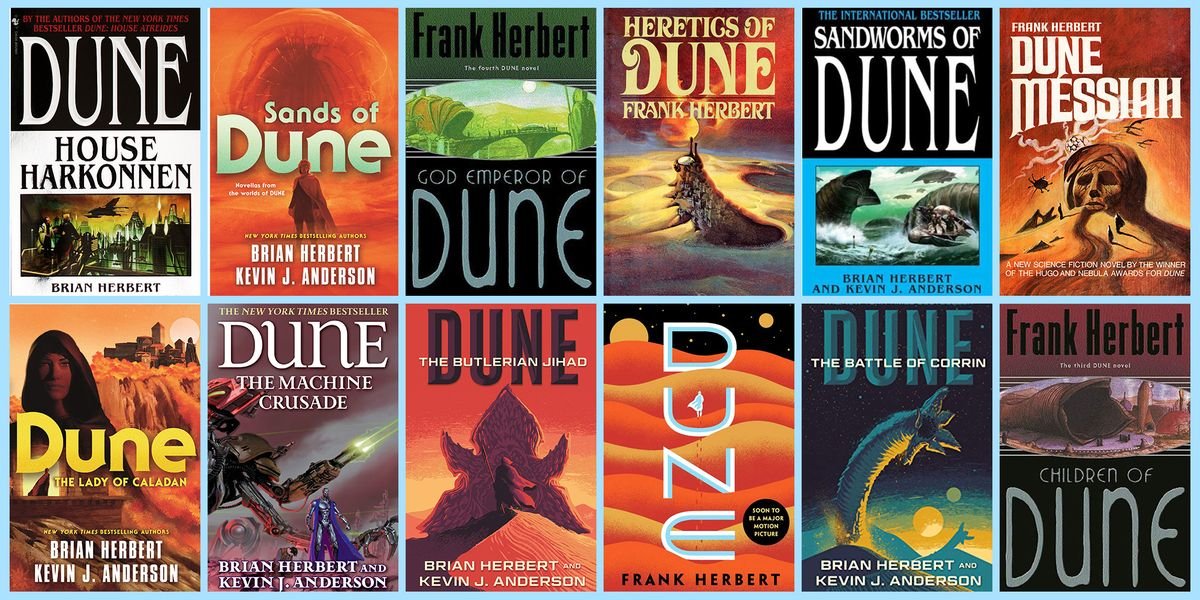
The book was a smashing success and lead to five sequels: ‘Dune Messiah’, ‘Children of Dune’, ‘God Emperor of Dune’, ‘Heretics of Dune’, and ‘Chapterhouse: Dune’. The series was later picked up by his son, Brian Herbert, with the help of Kevin J. Anderson, who together wrote a series of prequels and sequels that built up the world and mythology of the universe that Frank Herbert had forged in the unforgiving heat of his mythical world.
THE (COMPLICATED) STORY OF DUNE
The series primarily takes place on the planet Arrakis – a harsh arid desert at the center of a complex political struggle. Set in the distant future, where feudal houses vie for power in an interstellar empire, the first book centers on a young Paul Atreides, the son of Duke Leto and Lady Jessica, who is destined to become the “Kwisatz Haderach” (later known to the natives of Arrakis as “Muad’Dib”) – the one prophesized to alter the course of history.
Just like with Tolkien’s “Lord of the Rings” trilogy, there’s a lot to unpack here and it can sometimes be a little intimidating for new readers, especially with so much world-building and heavy exposition from page one. To *briefly* summarize, although Arrakis is a barely habitable planet, it’s the center of power in the Dune universe, because it’s the origin of the Spice Melange – the substance that makes interstellar travel possible and therefore is the most valuable thing in the entire universe. The spice harvested exclusively from Arrakis (long story) is a mind-altering substance that allows the Guild Navigators to safely traverse interstellar space (slightly longer story). There’s a rich backstory in the Dune novels that delve into how there was once a machine uprising, which is why they have since rejected AI and instead have highly trained Mentats who are basically human computers.
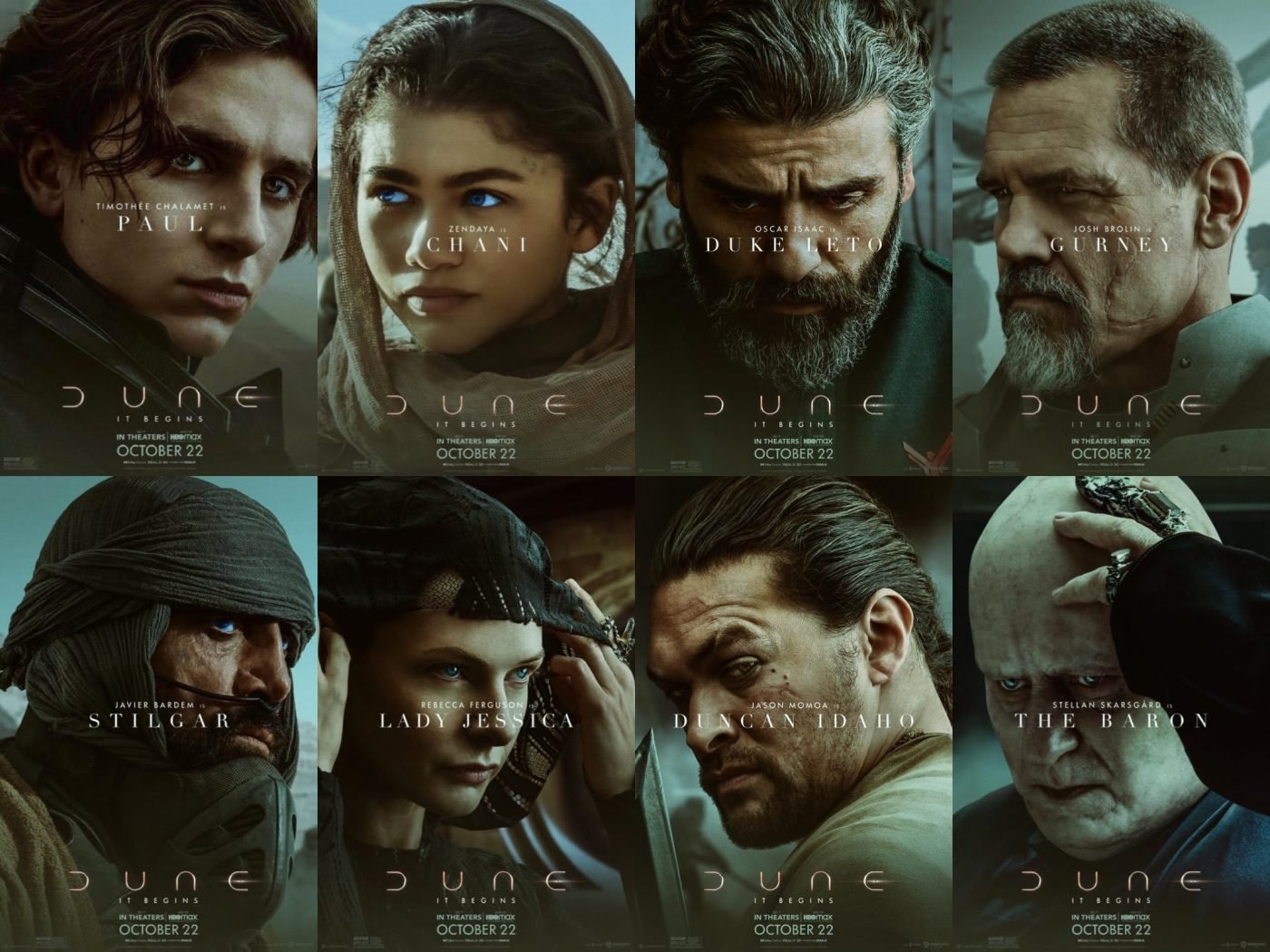
There are numerous factions at play: The Harkonnens – a powerful, wealthy, and malicious house ruled by the ruthless Baron Harkonnen on the polluted world of Giedi Prime, House Atreides – a royal family hailing from the oceanic planet of Caladan led by Duke Leto, The Bene Gesserit – a secret maternal order of psychics that have been shaping galactic events from the shadows for centuries, The Freman – the mysterious natives of Arrakis who have survived by adapting to the harsh conditions of the desert planet, the Spacing Guild – the organization that controls all interstellar travel in the cosmos, and the Padishah Emperor (Shaddam Corrino IV) – the paranoid ruler of the known universe, and commander of the elite Sardaukar warriors, who sees Duke Leto and the Harkonnens as a threat to his power. “Dune” was basically a sci-fi ‘Game of Thrones’ before ‘Game of Thrones’, except, ironically enough, George R.R. Martin has actually sourced ‘Dune’ as one of his primary inspirations for writing “A Song of Ice and Fire”.
The best examples of sci-fi aren’t just about strange alien worlds, robots, galactic empires, and cool space ships (which are all awesome in their own right), but the truly remarkable thing about this form of storytelling is in what it can be used to represent. “Dune” might take place in the future, but it’s *about* the past and present. Herbert’s world-building is intricate, weaving in historical symbolism, political metaphors regarding wars in the Middle East, a cautionary tale about the disregard for nature (way ahead of its time), and a thought-provoking look at both religion and spirituality. With influences drawn from numerous cultures, including but not limited to Native American tribes and the Islamic traditions, “Dune” is a multi-layered work, so it’s really no surprise that bringing this story to life on the big screen seems like a daunting (if not impossible) task…
SOME ATTEMPTS WERE MADE…
In the decades since Frank Herbert’s books first hit shelves, there have been numerous attempts at adapting this epic story for the screen, both big and small. One of the earliest attempts happened in the ’70s (which notoriously never quite got off the ground), thanks to French/Chilean visionary artist, Alejandro Jodorowsky. Jodorowsky was so far ahead of his time that the movie he wanted to make would have been ambitious even by today’s standards, and if it somehow had been made, we’d probably be living in a very different world today. Without going into too much detail, the film would have starred Orson Welles as Baron Harkonnen, Mick Jagger, and Salvador Dali as the Emperor(?!), along with production designs by H.G. Giger as well as famous French comic book artist, Moebius, and even a soundtrack by Pink Floyd! If you want to learn more about that, definitely check out the incredibly bizarre documentary, “Jodorowsky’s Dune”!
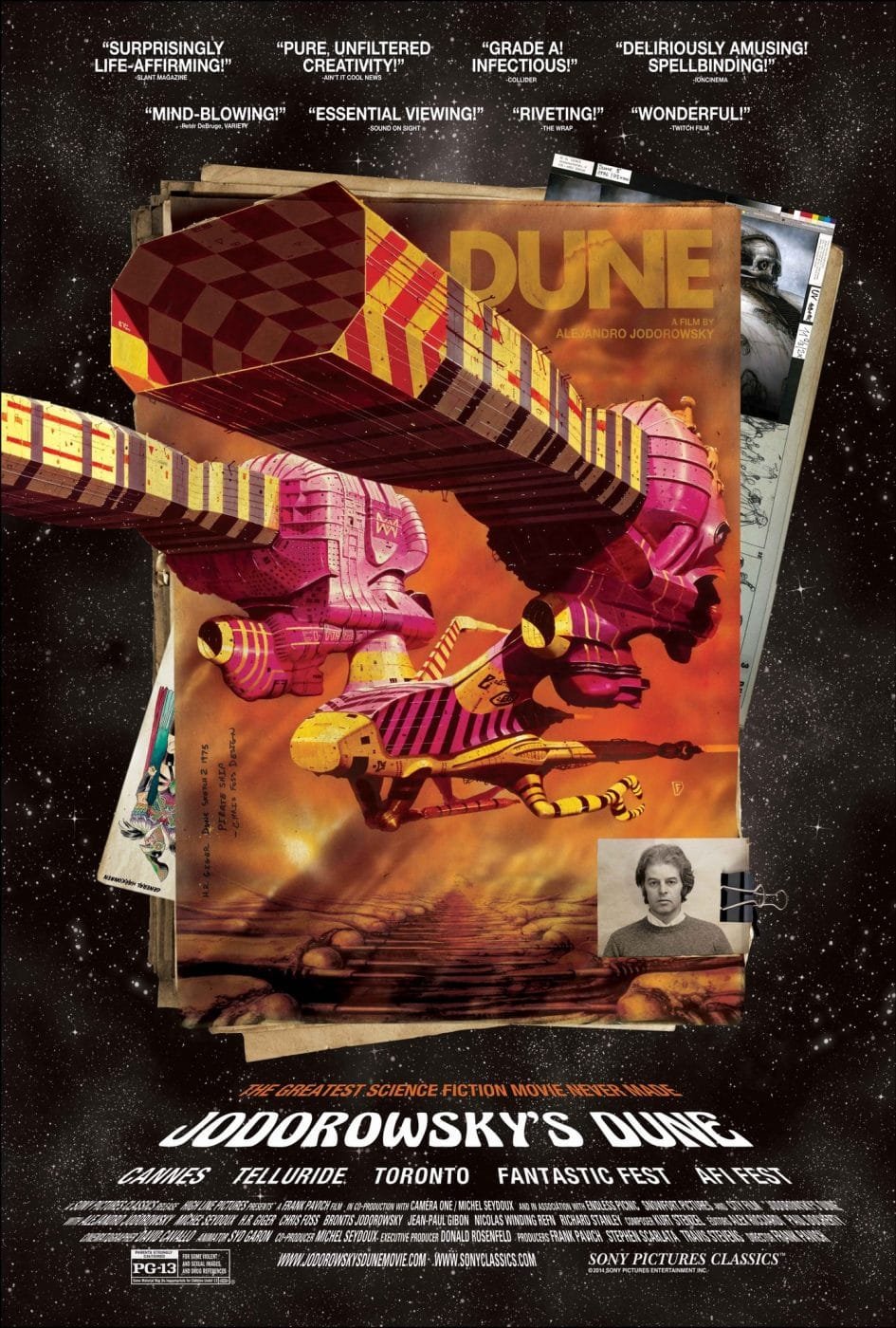
A decade later in 1984, another experimental director (David Lynch) attempted to bring “Dune” to the silver screen. This time, the movie actually got made, but at the time it was considered a critical and commercial flop and was seen as a desperate cash grab in the aftermath of the “Star Wars” trilogy. While David Lynch’s ‘Dune’ adhered pretty closely to the novel, it was also only 2 hours and 17 minutes, meaning they crammed as much of the book in as they could, but didn’t leave enough breathing room for the story to really justify itself to anyone who hadn’t read the books. The biggest problem with this version is that it spends so much time with info dumps that we barely get to know who the characters are, or what their motivations are. While the pacing is kind of a mess and some of the effects are laughable today, the movie isn’t without merit. It has an all-star cast including Kyle MacLachlan, Sir Patrick Stewart (Captain Picard himself!), Francesca Annis, Sean Young, Max Von Sydow, and Sting!
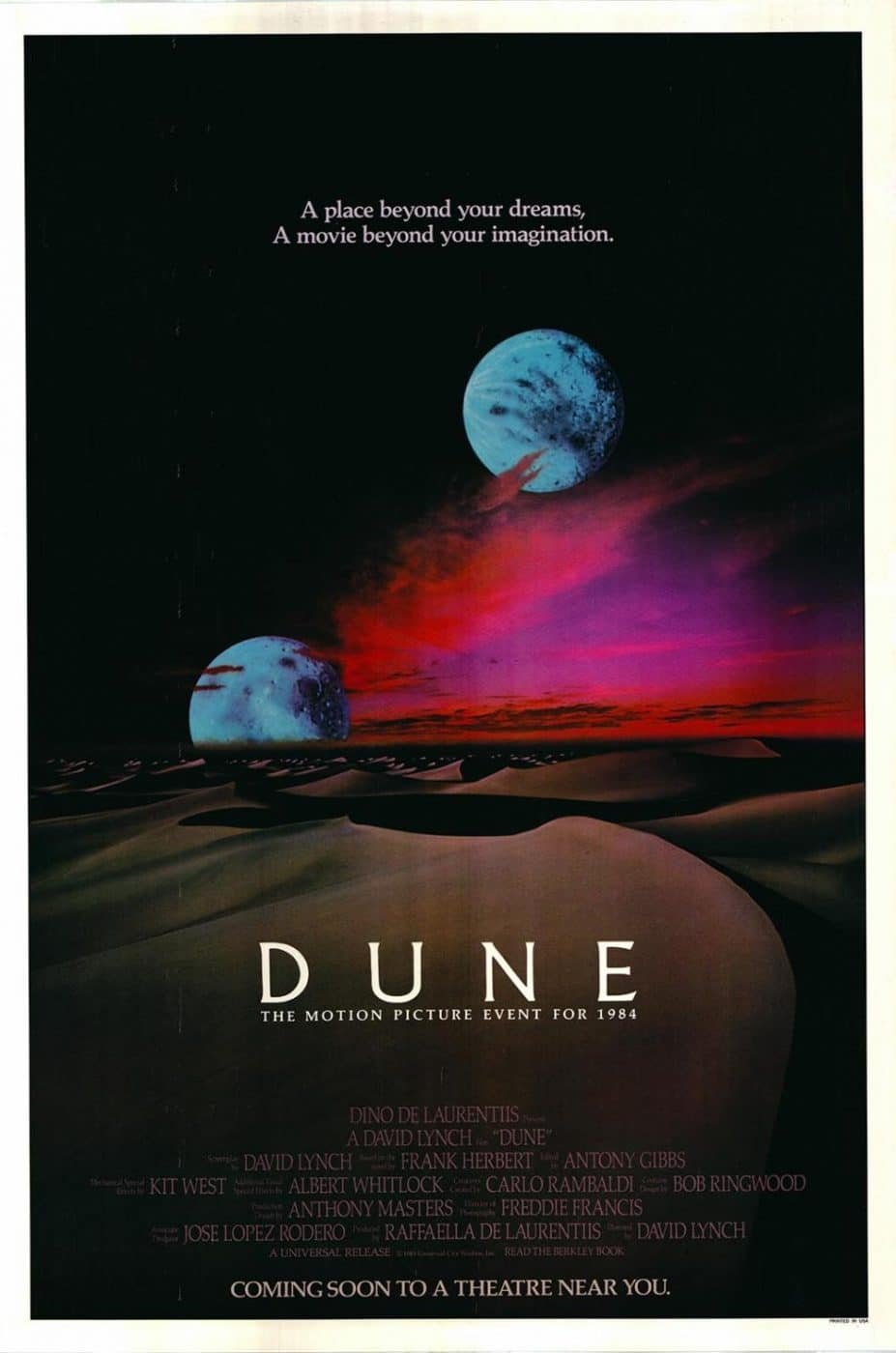
In 2000, the Sci-Fi Channel debuted the Emmy-Award-winning mini-series, aptly titled “Frank Herbert’s Dune”. The show featured William Hurt, Alec Newman, Ian McNeice, and Julie Cox. It was successful enough for a sequel series, “Children of Dune” (2003) which added Susan Sarandon, Alice Krige, and James McAvoy – covering the second and third books in the series. While it’s often considered a vast improvement over the 80’s version, the effects were still somewhat limited and unfortunately, the CG hasn’t aged particularly well over the years. While these two were more faithful to the books in a lot of ways, they still hadn’t quite captured the scope of the saga, shackled by an early 2000’s TV budget.
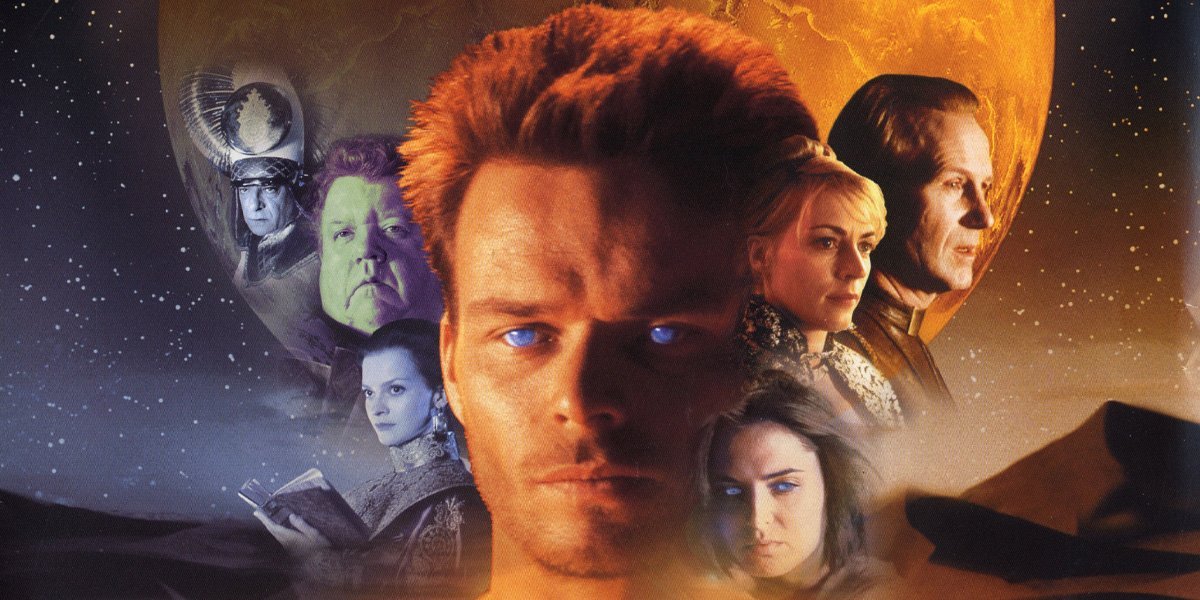
Thankfully, the new movie absolutely learns from every mistake these past incarnations made while translating Frank Herbert’s world to a modern audience.
GIVING LIFE TO ARRAKIS
The newest iteration of “DUNE” is directed by French-Canadian director and writer, Denis Villeneuve. Villeneuve’s previous sci-fi movies, “Arrival” and “Blade Runner 2049” proved that he knows his way around a camera, can handle the heavy material and that he has what it takes to cinematically pull off an atmospheric world on an immense scale that still feels authentic. Between his masterful direction and an incredible score by Hans Zimmer, the visuals and sound design alone is enough to sell this movie on their own merits. In fact, Hans Zimmer was so passionate about this project, as a fan of the novel, that he actually turned down the opportunity to score “TENET” with his long-time collaborator, Christopher Nolan! To top it off, this movie has one of the most insane ensembles in movie history!
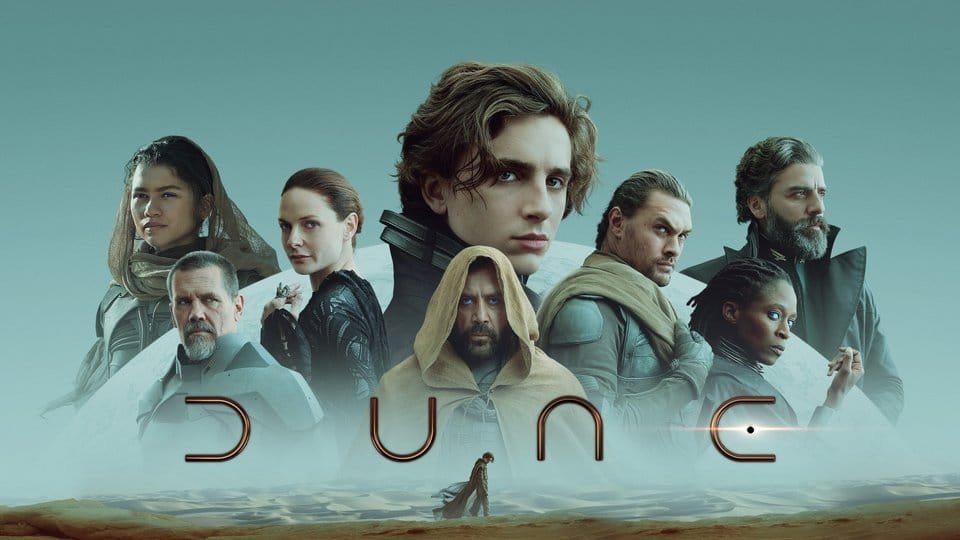
Timothée Chalamet IS Paul Atreides. Rebecca Ferguson was born to play Lady Jessica. Zendaya is inspired by casting as Chani. Oscar Isaac (and his epic beard) threatens to steal the show as Duke Leto. Jason Momoa (Aquaman) gives what might be his best performance yet as Duncan Idaho. Stellan Skarsgård is straight-up terrifying as Baron Harkonnen. David Dastmalchian (Polka Dot Man from ‘The Suicide Squad’) is apparently living his best life this year. Javier Bardem (Silva from Skyfall) delivers a perfect blend of charisma and menace. And I’d be remiss to not call out Josh Brolin’s Gurney Halleck who really sells the character, so much so that I think he could actually take on Thanos in a fistfight (no disrespect to Captain Picard). Stephen McKinley Henderson, Chen Chang, Dave Bautista, Sharon Duncan-Brewster, Charlotte Rampling, and Babs Olusanmokun are all so great, each of them bringing their A-game. The cast is basically perfect – they all feel like they walked right off the page!
With the help of Zimmer’s transcendent music, Denis Villeneuve hasn’t just adapted Frank Herbert’s “Dune” for the big screen, they have managed to recreate Arrakis itself, as a living, breathing world! As the tagline from the 1984 film claims, this is “A place beyond your dreams, a movie beyond your imagination.” Not only did they pull it off, but this is also probably the best possible version of this adaptation.
FEAR IS THE MIND KILLER
Walking into this one, I had a feeling it would be good, but I had no idea just how good.
Unlike the David Lynch one, this version didn’t rely heavily on exposition dumps to get the story and themes across, it instead relied on context – it showed rather than told. When translating a book to screen, there are certain changes you have to sometimes make for it to work in a visual medium and Villeneuve clearly understands that. The most important thing is that the essence of Frank Herbert’s story is retained here, perhaps more so than any of the previous attempts at adapting it.
The scene where Paul is tested by the Reverend Mother (#FearIsTheMindKiller) recreates the intensity I felt when first reading the book back in high school. When the Duke tells Jessica, “I should have married you” you feel the emotion of the moment and worry about what’s to come. Instead of making the Baron a grotesque and over-the-top villain, Skarsgård plays him as a cold, calculating monster – a man with immense power and zero empathy.
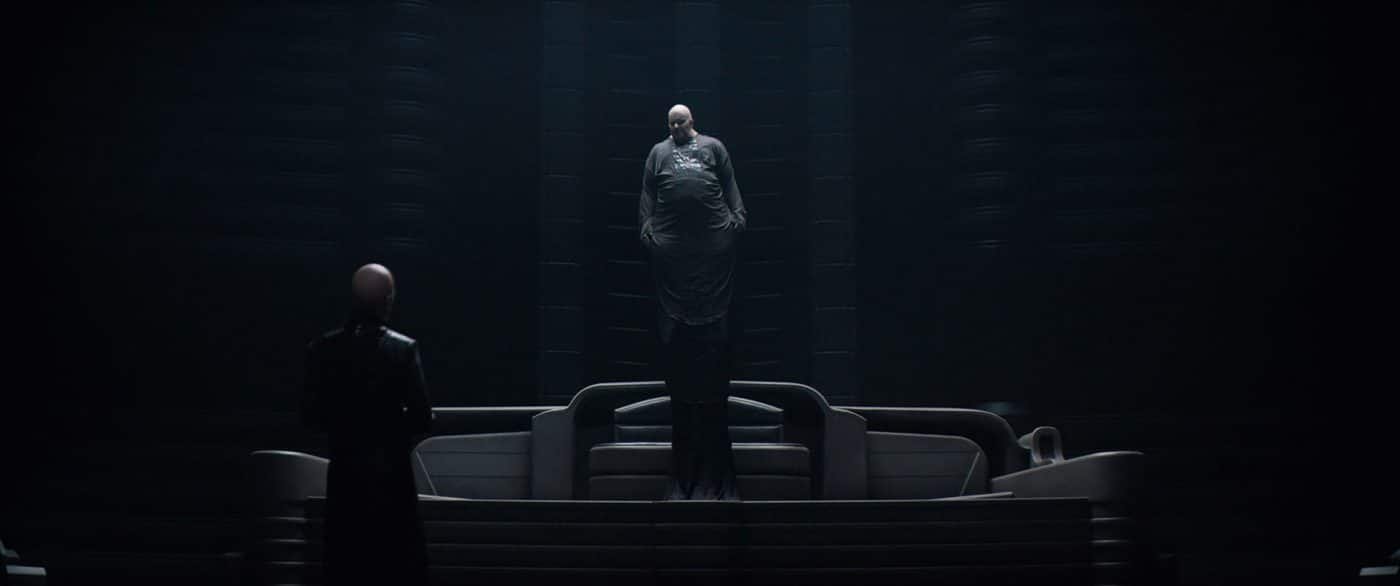
Sometimes, less is more, but when it comes to the effects, this movie absolutely delivers! The sense of scale at play here is unimaginable. The action scenes are breathtaking, the music is otherworldly, and the acting is top-notch throughout. Not to mention some of the coolest starship and vehicle designs this side of ‘The Fifth Element’.
It’s really rare that a movie of this caliber comes along – one that works both as a sci-fi blockbuster and an art-house film, that has such a massive sense of awe-inspiring scale AND can have you still contemplating its deeper meanings days later. To me, “DUNE” (2021) checks all my boxes for what I want out of a sci-fi movie, as well as a ‘Dune’ adaptation, and is probably already making itself at home in my Top 5 list as I type this.
That said, it might not be everyone’s cup of tea. For those who haven’t read the book, or aren’t into multi-layered philosophical movies, this might be a harder sell. On the same token, I’d argue that on the merits of the acting, cinematography, and soundtrack alone, this is a movie that needs to be experienced. Like “Fellowship of the Ring” and “Jurassic Park” before it, I’m happy to say that this is easily one of the best translations from a book to screen ever made.
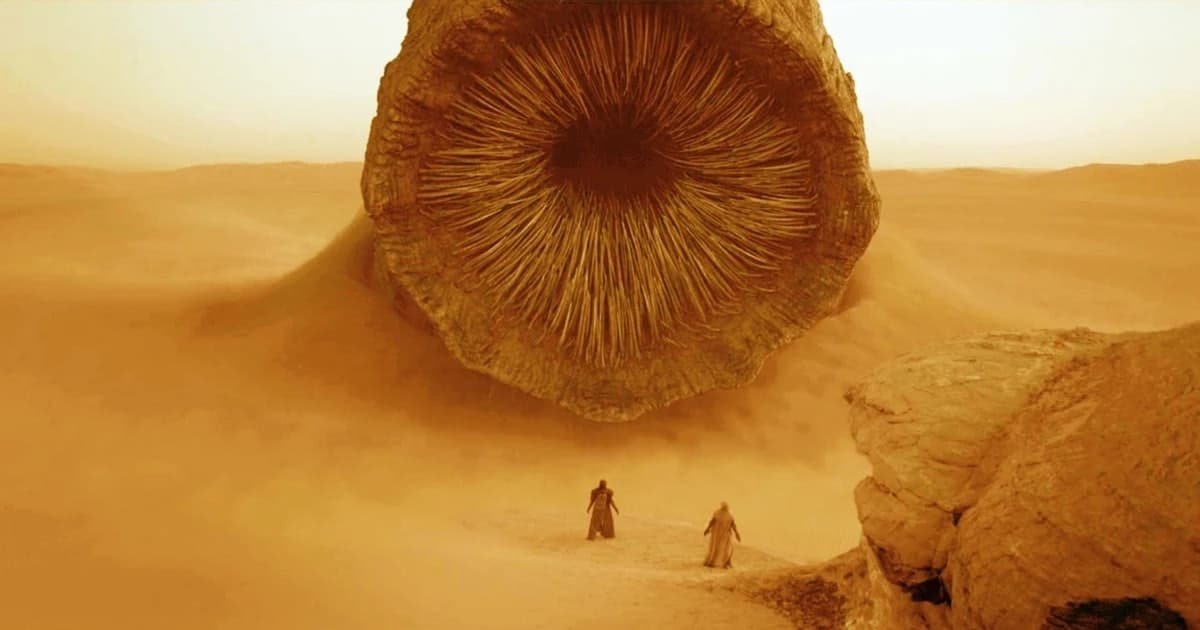
The only possible critique of this movie is that it’s only PART ONE! Just like with “Avengers: Infinity War” and that shocking cliffhanger, without the resolution of “Avengers: Endgame”, this one really leaves you wanting more, but that’s not necessarily a bad thing. It’s hard to really call it a design flaw because it’s intentional, and as long as they stick the landing with PART TWO, this will probably go down in history as one of the greatest sci-fi movies ever made.
That said, I was absolutely shocked that the sequel wasn’t already filmed, much less greenlit! I can’t imagine this movie bombing, but if it Legendary Studios and Warner Brothers don’t follow it up, it would be a cinematic tragedy.
THE SPICE MUST FLOW!
So yeah, “DUNE” is an incredible film, masterfully crafted, expertly executed. Every frame of this movie is a work of art in itself. This is one of those rare cinematic experiences that deserve to be experienced on the biggest screen possible. Well worth the (usually) absurd price of an Imax ticket! Just keep in mind that this is just the first half of the first book!
And seriously, Part 2 can’t get here soon enough!
“DUNE” (2021) is now streaming on HBO Max, as well as in theaters and IMAX!

